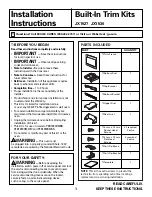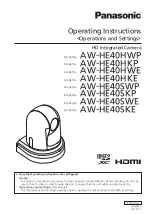
CHAPTER 4
ATA Register Set and Protocol
SanDisk CompactFlash Memory cards can be configured as a high performance I/O device
through the following ways:
•
Standard PC-AT disk I/O address spaces 1F0h-1F7h, 3F6h-3F7h (primary); 170h-177h,
376h-377h (secondary) with IRQ 14 (or other available IRQ).
•
Any system decoded 16-byte I/O block using any available IRQ.
•
Memory space.
The communication to or from the card is done using the Task File registers, which provide all
the necessary registers for control and status information. The PCMCIA interface connects
peripherals to the host using four register mapping methods. Table 4-1 is a detailed description
of these methods.
Table 4-1
Standard I/O Configurations
Config Index
I/O or Memory
Address
Drive
Description
0
Memory
0-F, 400-7FF
0
Memory Mapped
1
I/O
XX0-XXF
0
I/O Mapped 16 Contiguous
Registers
2
I/O
1F0-1F7, 3F6-3F7
0
Primary I/O Mapped Drive 0
2
I/O
1F0-1F7, 3F6-3F7
1
Primary I/O Mapped Drive 1
3
I/O
170-177, 376-377
0
Secondary I/O Mapped Drive 0
3
I/O
170-177, 376-377
1
Secondary I/O Mapped Drive 1
4.1
I/O Primary and Secondary Address Configurations
Table 3-2 contains configurations for primary and secondary I/O decoding.
Table 4-2
Primary and Secondary I/O Decoding
-REG
A9-A4
A3
A2
A1
A0
-IORD=0
-IOWR=0
0
1F(17)
0
0
0
0
Even RD Data
a,b
Even WR Data
a,b
0
1F(17)
0
0
0
1
Error Register
a
Features
a
0
1F(17)
0
0
1
0
Sector Count
Sector Count
0
1F(17)
0
0
1
1
Sector No.
Sector No.
0
1F(17)
0
1
0
0
Cylinder Low
Cylinder Low
0
1F(17)
0
1
0
1
Cylinder High
Cylinder High
0
1F(17)
0
1
1
0
Select Card/Head
Select Card/Head
0
1F(17)
0
1
1
1
Status
Command
0
3F(37)
0
1
1
0
Alt Status
Device Control
0
3F(37)
0
1
1
1
Drive Address
Reserved
© 2007 SanDisk Corporation
4-1
Rev. 12.0, 02/07
Summary of Contents for CompactFlash Extreme III
Page 2: ......
















































